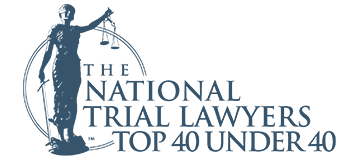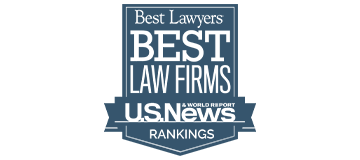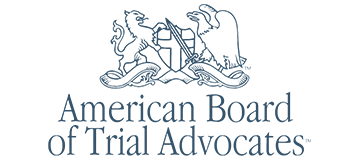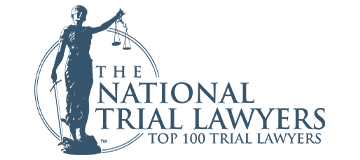We seek justice for our clients through a verdict or settlement that often results in a judgment—monetary compensation intended to help restore our clients to the condition they were in before being harmed. Judgments are frequently paid through insurance companies. But what if insurance isn’t available as a source of recovery?
Thankfully, other judgment recovery options are available.
Defendant actions that can affect a judgment recovery
When insurance doesn’t cover a judgment, the recovery process can go in a variety of different directions, depending on the defendant’s resources and willingness to pay:
- The defendant has sufficient assets and voluntarily pays. This situation speaks for itself and is, understandably, the best-case outcome.
- The defendant has sufficient assets but appeals the judgment. Here, the defendant doesn’t want to give up his assets while the case is on appeal, so instead he posts the full judgment amount with the court as a type of insurance. Defendants can pay the full amount themselves or, more typically, opt for an underwriter’s surety bond, which guarantees payment of the judgment in the event the judgment isn’t overturned. These bonds allow the defendant to put up the judgment amount for appeal without having to immediately pay out of pocket. From our clients’ point of view, surety bonds represent an excellent source of recovery.
- The defendant has sufficient assets but doesn’t voluntarily pay or doesn’t post a bond on appeal. These are the most difficult situations for recovery. Sometimes they stem from the defendant’s assets not being easily liquidated in order to get a surety bond. For example, if a defendant has sufficient assets but they’re in the form of rental properties, the defendant may be reluctant to sell those properties to provide the collateral for their appeal.
For a free legal consultation, call (614) 481-6000
Basic tools for judgment recovery
Regardless of the reason why the defendant isn’t paying, we have some basic tools at our disposal to ensure our clients ultimately receive the judgments accorded them.
- Certificate of judgment. If the assets in question come in the form of real estate, an instrument we commonly rely on is something called a certificate of judgment. A certificate of judgment basically puts a lien on any real estate a defendant owns, which means that in the event they try to sell the property, a title search will reveal the plaintiff has a claim on it. The certificate of judgment would have to be paid, often with proceeds from the sale of the property, before the title could be cleared and the defendant could complete the transaction.
- Wage garnishments. Here, the court issues a notice stating that every pay period the defendant’s employer must pay a certain amount of the defendant’s paycheck to the court. The plaintiff receives that money, and it’s applied to the judgment balance until the judgment is paid off.
- Non-wage garnishments. These apply to property other than wages. The defendant receives a notice to deposit the property in question to the court, then the plaintiff liquidates the property and that value is applied to the judgment. For example, if a business owner doesn’t receive wages but keeps profits in a bank account, that bank account can be garnished, and the funds can be applied toward the judgment until it is paid off.
- Writ of execution. In instances when the defendant’s resources are something other than money—and we know specifically what those assets are—a writ of execution can be issued. If, for example, the personal property is a boat, a sheriff’s deputy would receive a writ of execution that would instruct him or her to go to the specified location and seize the boat. The boat is then sold at auction and the proceeds are applied to the judgment.
- Receivership. When the defendant is a business or has significant business assets, a form of recovery called receivership is often implemented. In a receivership, the court appoints a person to effectually manage the business affairs of the company or defendant. That person either sells or runs the company, distributing income to creditors from the sale or company operations.
For example, if the defendant owns rental properties, the court could put a receiver in place to manage those properties—collecting the rent, maintaining the grounds, etc.—and the rental income can be applied toward the judgment. The receiver could also sell the properties themselves to pay off the judgment.
Purposely avoiding judgment recovery
Sometimes defendants don’t voluntarily pay their judgments because their assets aren’t liquid. But just as often it’s because they’re attempting to avoid payment altogether. Determined defendants may go to great lengths to hide their assets, by giving them away or selling them at a low cost to trusted friends or family members. For example, after getting hit with a judgment, defendants might sell their boat or car the next day, just so it’s no longer attached to their name and can’t be collected from them.
As a result, we attorneys must track down any assets the defendant might have, then act quickly and aggressively to ensure they’re secured by the sheriff or paid to the court before the defendant has a chance to move them.
Fortunately, if a defendant has tried to move assets, we can take some remedial actions. We can identify a sale as a fraudulent transfer, go to court, and get a judgment against the recipient of the property, ordering them to return the property because the sale was made in an attempt to shield assets.
Click to contact our personal injury lawyers today
Bankruptcy
Another way defendants attempt to block collection efforts is to opt for bankruptcy, which initially freezes any ability to collect on a judgment. In these situations, plaintiffs must then assert their claim on their judgment through the bankruptcy process.
During a bankruptcy, a court appoints a trustee to sort through the defendant’s assets and liabilities, then pay off those liabilities in an order of priority established by relevant bankruptcy codes. Typically, a defendant who files bankruptcy has meager assets and is unable to pay the judgment in full.
When that happens, our challenge is then to avoid the defendant’s bankruptcy from discharging the plaintiff’s judgment, so we can continue to pursue the defendant for payment after the bankruptcy is completed. This can be difficult because in the overwhelming majority of cases, if the defendant declares bankruptcy, the end result is that all their debts are discharged, and they essentially emerge with a clean slate.
That said, there are certain judgments that are considered non-dischargeable, like those deriving from fraud, injury, or death due to DUI, or intentional acts of injury. Judgments are also not discharged if the defendant commits fraud on the bankruptcy court, hides assets from the trustee, or abuses the bankruptcy structure.
In all of these instances, although recovery may not be obtainable from the bankruptcy process directly, we work to preserve our client’s ability to pursue their judgment in the future. That way, if a defendant filed for bankruptcy and then later, say, developed a successful business opportunity, we would still be able to pursue assets through garnishments, receiverships, and the like.
Complete a Free Case Evaluation form now
Making justice count
As many elements as possible—insurance, sources of income, assets and liabilities, types of assets, the underlying dispute of a case—must be taken into consideration before we even undergo a trial. In the long run, it’s not enough just to win cases—our aim is to help clients find justice and become whole again. Fortunately, even if insurance isn’t available as a means of judgment recovery, we can take a number of effective actions to ensure that justice is done.
The materials provided here are for informational purposes only and do not constitute legal advice. Please contact your attorney for advice with respect to a particular issue or problem.
The outcome of any client’s case will depend on the particular legal and factual circumstances of the case.
Call or text (614) 481-6000 or complete a Free Case Evaluation form
















































